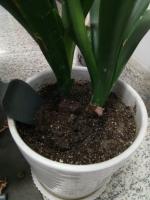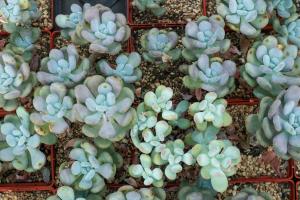Introduction
Palm trees are a great addition to any landscape. They can add a tropical feel to any environment and provide shade in warm weather. However, many people are unsure if they can plant palm trees in their area. In this article, we will explore the conditions necessary for palm tree growth and offer tips on how to plant them.
Climate Requirements
Palm trees are typically associated with warm, tropical climates. However, there are many species of palm trees that can thrive in a variety of different climates. Some palm trees can even survive in areas that experience frost or snow. If you live in a cooler climate, it is important to research which species of palm trees are best suited to your area. The moisture and soil conditions in your area are also important to consider when selecting a palm tree species.
Soil Requirements
Palm trees prefer well-draining soils that are rich in nutrients. They can tolerate a range of soil types, including sandy, loamy, and clay soils. However, it is important to ensure that the soil is not too compacted, as this can impede root growth. Before planting a palm tree, it is a good idea to amend the soil with compost or other organic matter to improve soil structure and nutrient availability.
Water Requirements
Palm trees require regular watering, especially when they are first planted. However, it is important not to overwater them, as this can lead to root rot. The frequency of watering will depend on the species of palm tree and the climate in which it is growing. In general, palm trees require more water in warm weather and less water in cooler weather.
Sunlight Requirements
Most species of palm trees require full sun to thrive. However, some species can tolerate partial shade. It is important to research the light requirements of the species of palm tree you are interested in planting to ensure that it will receive the proper amount of sunlight in your area.
Planting Tips
When planting a palm tree, it is important to dig a hole that is wide enough to accommodate the root ball. The hole should be deep enough that the top of the root ball is level with the surrounding soil. It is a good idea to add a layer of mulch around the base of the tree to help retain moisture and protect the roots. Palm trees are also susceptible to nutrient deficiencies, so it is important to fertilize them regularly with a palm-specific fertilizer.
Conclusion
Planting palm trees can be a great way to add some tropical flair to your landscape. By selecting a species of palm tree that is well-suited to your area and providing the necessary growing conditions, you can enjoy the beauty and benefits of a palm tree for years to come.

 how many times do yo...
how many times do yo... how many planted tre...
how many planted tre... how many pine trees ...
how many pine trees ... how many pecan trees...
how many pecan trees... how many plants comp...
how many plants comp... how many plants can ...
how many plants can ... how many plants and ...
how many plants and ... how many pepper plan...
how many pepper plan...































